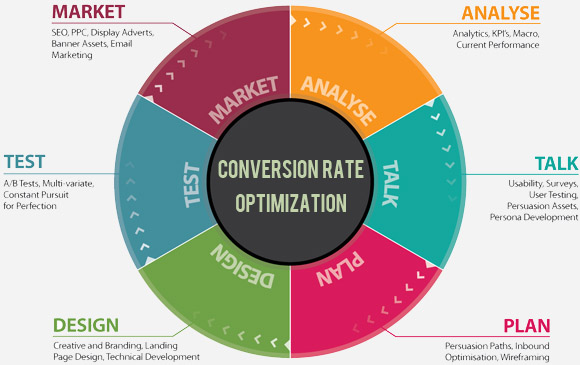Conversion Rate Optimization (CRO)
Conversion Rate Optimization or CRO Makes Businesses More Money!
How do you increase conversions?
The answer is to test and test again to learn more about how a business can better serve their customers. Then test some more.
It really is that simple.
Once testing begins, there are critical points that we take into account which have a significant impact on the validity of results and the analysis of the data.
Fluctuations in customer behavior will happen over time due to random variation, seasonal trends and other factors. Digital properties could potentially convert more prospects by optimizing a specific aspect like hidden friction as well, which is not always obvious at first.
These are a few factors on how continuous testing can help you meet your goals.
Conversion Rate Optimization relies on Testing
A large enough volume of traffic to your test treatment groups is needed before it becomes statistically significant and ensuring that the consumer behavior that is being tested is representative of the entire population of people that would normally visit the digital property.
This is also discussed in our Testing, A/B Testing and Multivariate Testing portions of our site.
The impact of sample sizes on test validity is too important to overlook!
And remember when testing your digital properties, remember the smaller the sample size, the lower the statistical likelihood of correctly rejecting a false null hypothesis.
No Day is the Same
Another significant factor when testing continuously is how a sample size fluctuates over time. Understanding how time impacts traffic helps accurately capture the true nature of the customers.
Let’s say a test is started on a Monday.
By the end of that day, an adequate sample size is collected to statistically validate test results.
Collecting an adequate sample size in less than 24 hours does not necessarily mean the findings can be generalized from Monday’s sample as a reliable insight for other days of the week, the entire month or year. Insights gathered from those results to inform the marketing decisions cannot be based on that 24 hour data alone.
It is still possible traffic during other days of the week and weekend may behave similarly but they also may behave radically differently from the Monday traffic. So as a general rule, when testing, it is ideal to keep a test running for a minimum of at least seven days to identify any daily fluctuations in traffic behavior that would never have been identified otherwise.
The Longer the Better, Historical Data Rules
Ideally, possessing historical data of at least one year as a comparison is helpful and will increase the accuracy and precision of testing decisions and conclusions.
New companies may not have that luxury, but working on setting up the correct tracking and tagging to monitor and benchmark correctly is paramount when gathering digital intelligence and incorporating that into a Digital Strategy.


